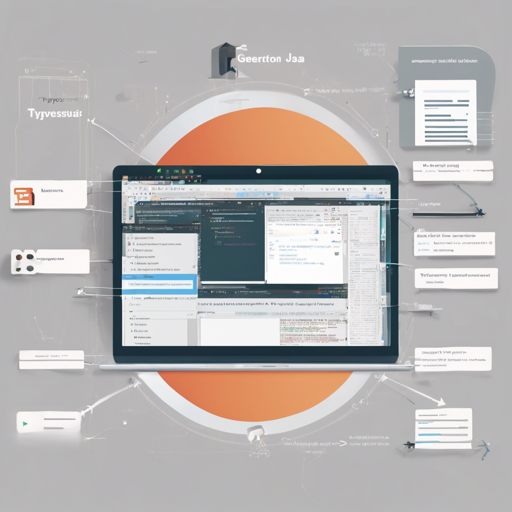If you’re working with a REST service written in Java and need to convert Java classes into TypeScript definition files, the typescript-generator is the tool for you. This guide will walk you through the setup and usage, making it easy and user-friendly.
What is TypeScript Generator?
The typescript-generator is designed to generate TypeScript definition files (.d.ts) from Java JSON classes. Utilizing Java’s object-to-JSON mapping capabilities, it allows you to create TypeScript interfaces that accurately reflect your Java classes.
Getting Started
To get started with typescript-generator, you have two main options for integration: Maven or Gradle. Both paths are straightforward and will guide you in generating TypeScript interfaces from your Java classes.
Using Maven
To utilize the typescript-generator-maven-plugin in your Maven project, add the following code snippet to your pom.xml:
cz.habarta.typescript-generator
typescript-generator-maven-plugin
x.y.z
generate
generate
process-classes
jackson2
cz.habarta.typescript.generator.Person
module
Using Gradle
For Gradle users, you can integrate the typescript-generator plugin as follows:
plugins {
id "cz.habarta.typescript-generator" version "x.y.z"
}
generateTypeScript {
jsonLibrary = "jackson2"
classes = [
cz.habarta.typescript.generator.sample.Person
]
outputKind = "module"
}
Understanding the Code with an Analogy
Think of the typescript-generator as a translator for two different languages: Java and TypeScript. Each Java class, much like a person speaking a native language, contains specific traits (properties) and capabilities (methods). When you invoke the generator, you are essentially giving it a script to follow, enabling it to translate the attributes and behaviors of these Java classes into TypeScript interfaces.
For example, if we take a Java class called Person with properties like name, age, and hasChildren, the generator will convert these traits into a new language (TypeScript) while ensuring the meaning remains intact. The end result is an accurate representation that other “speakers” (developers) can understand and use.
Troubleshooting Common Issues
If you encounter issues along the way, here are a few troubleshooting steps:
- Ensure that you have the correct version of the plugin specified in your build files.
- Check that all required classes are properly referenced and accessible.
- Verify your output parameters are set correctly for your needs.
- Make sure your JSON library is compatible with the generator settings.
For more insights, updates, or to collaborate on AI development projects, stay connected with fxis.ai.
Conclusion
By following the steps outlined in this guide, you’ll be able to generate TypeScript interfaces from your Java classes seamlessly. The typescript-generator simplifies the bridge between Java and TypeScript, allowing developers to work more efficiently across different platforms.
At fxis.ai, we believe that such advancements are crucial for the future of AI, as they enable more comprehensive and effective solutions. Our team is continually exploring new methodologies to push the envelope in artificial intelligence, ensuring that our clients benefit from the latest technological innovations.

